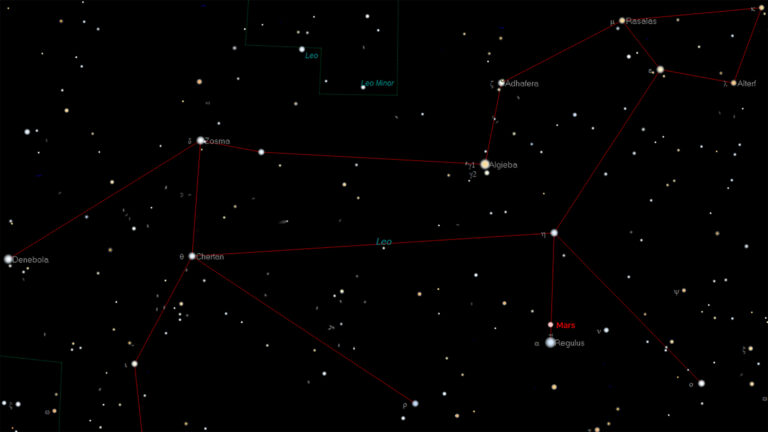Key Takeaways:
You might think astronomers know the solar system pretty well. And they do. But they might not know its whole story. In fact, it’s possible another planet lurks beyond Neptune
In fact, it’s possible another planet lurks beyond Neptune, or even a faint, distant companion star to the Sun. Hypothetical planets in the solar system — along with real ones — have turned up in some pretty strange places.
Of course, the bright naked-eye planets — Mercury, Venus, Mars, Jupiter, and Saturn — were all known in antiquity and revered as gods because they showed free will to move among the stars. The first telescopically discovered planet was Uranus, found by William Herschel in 1781. After orbital calculations suggested a massive tug on Uranus being applied farther out, Johann Galle, with some help from Heinrich D’Arrest, discovered Neptune in 1846.
Perturbations in Neptune’s orbit suggested yet another, more distant planet, and many searches were conducted as early as 1877; Pluto was finally found by Clyde Tombaugh in 1930 by comparing pairs of photographic plates and detecting its motion. Oddly enough, the perturbations weren’t really there, or at least Pluto wasn’t massive enough to cause them. In 2006, astronomers decided Pluto wasn’t up to planetary standards, and so demoted it to a “dwarf planet.”

Bringing the universe to your door. We’re excited to announce Astronomy magazine’s new Space and Beyond subscription box – a quarterly adventure, curated with an astronomy-themed collection in every box. Learn More >>.
Does the number 8 really constitute the whole inventory of the Sun’s planets? Many mathematical and observational exercises have led astronomers to suspect other major bodies orbit the Sun. As early as 1841, astronomers commenced a search for various “Planet Xs.” The first one turned out to be Neptune. The second was Pluto, after some seven different trans-Neptunian planets (with different masses and orbits) had been proposed by the most active searcher, E. C. Pickering, alone.
But even after Pluto’s discovery, astronomers predicted planets beyond, mostly on theoretical grounds. In 1946, Francis Sevin predicted the existence of “Transpluto,” a planet 7 billion miles (11 billion kilometers) from the Sun (Pluto’s average orbital distance is 3.6 billion miles).
In the 1950s, others hypothesized similar distant planets. Twenty years later, Tom van Flandern of the U.S. Naval Observatory became convinced another planet existed based on the orbital motions of Uranus and Neptune. He and a colleague searched for such a planet, but it was never found.
In 1987, John Anderson of JPL carefully examined the trajectory of the Pioneer 10 and 11 spacecraft and concluded a more distant planet may exist, with a mass of about five Earths and an orbital period of 1,000 years. Conley Powell, also of JPL, investigated the orbital data of Uranus and hypothesized a planet of three Earth masses some 5.6 billion miles (9.0 billion km) from the Sun. When a search took place at Arizona’s Lowell Observatory using the parameters from Powell’s calculations, nothing of the correct brightness in the right spot turned up. Although a Planet X may exist, none has been found.
Still, intense interest in the outer solar system has paid off handsomely. With the first discovery of a so-called Kuiper Belt object in 1992, David Jewitt, Jane Luu, and other astronomers have uncovered a new element of the solar system. As many as 70,000 small bodies — asteroids and burned-out comets — exist in a zone extending from the orbit of Neptune outward, some 2.8 billion to 4.5 billion miles (4.5 to 7.2 billion km) from the Sun.
The Kuiper Belt discoveries have infused new sophistication into planetary scientists’ understanding of solar system dynamics. It’s what led to Pluto’s demotion. And it leads to the most important question: What makes a planet, anyway? In 2006, the International Astronomical Union decided (for now, at least) that a planet is any object orbiting a star that is neither a star itself nor another planet’s moon; contains enough mass for its gravity to have forced it to take on a spherical shape; and is big enough to have cleared its orbit.
Other hypotheses about solar system monsters have come and gone. There was Vulcan, an intra-Mercurial planet, thought to exist in the late 19th century (and briefly revived based on flawed observations in 1970–1971). There were phantom moons reported around Mercury, Earth, Venus, and Mars, off and on. There was “Nemesis,” a proposed distant companion star to the Sun, that lurks about 1 light-year away and occasionally kicks a new set of comets sunward from the Oort Cloud.
The latest alarm came in 1999, when researchers in the United Kingdom and at Louisiana State University proposed the existence of a planet inside the distant Oort Cloud. But none of these ideas have panned out or been verified by observation. At the least, we have a middleweight star with eight planets, at least five dwarf planets, and a vast collection of small bodies orbiting it. But make no mistake: Astronomers will keep watching.












